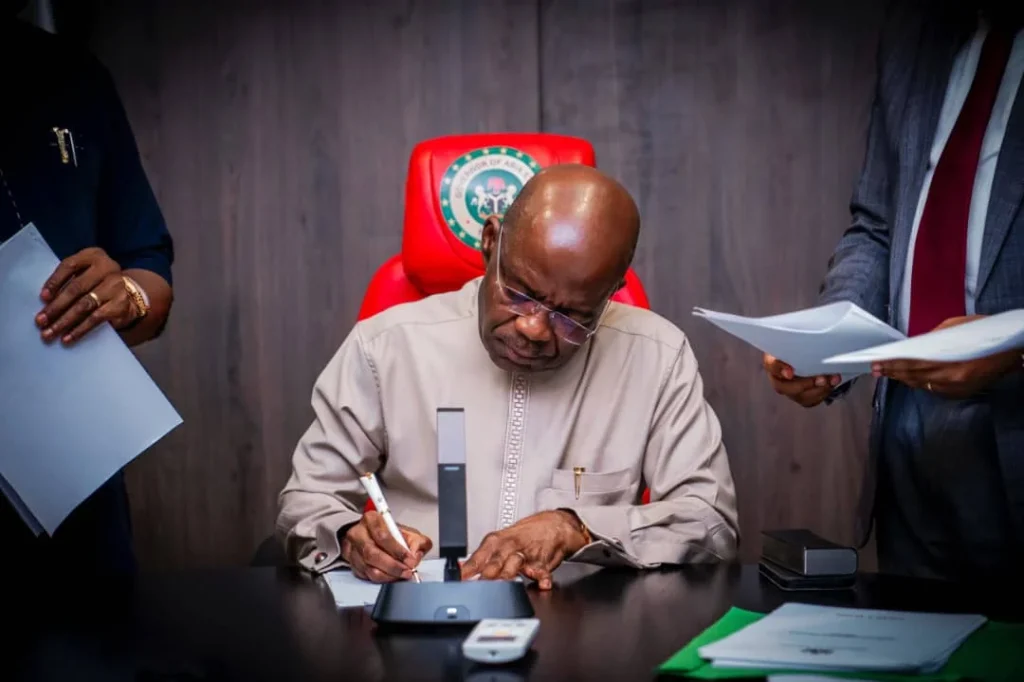The Federal Government borrowed N2.2 trillion from local investors in the first quarter of 2022 through FGN Bonds, Treasury Bills, and FGN Savings Bonds as part of its ongoing attempts to finance the N6.4 trillion deficit spending in budget 2022.
However, compared to N2.4 trillion, which represents an 8.6% YoY decrease from N2.43 trillion sold in Q1 of 2021, the amount borrowed indicates an 8.6% decrease.
However, in Q1’22, the FG borrowed a total of N1.93 trillion from local investors after paying them N827 billion for loans made through matured treasury bills.
The FG intends to spend N17.1 trillion under the approved Budget 2022, with projected revenue of N10.7 trillion and new borrowing of N6.4 trillion. This will be funded by N2.57 trillion in foreign borrowings, N2.57 trillion in domestic borrowings, N90.7 billion from privatization proceeds, and N1.16 trillion in multilateral and bilateral loan drawdowns.
Therefore, 75% of the anticipated borrowing from local investors in 2022 is represented by the net borrowing of N1.93 trillion from local investors in Q1 of 2022.
When the aforementioned is added to the $1.25 billion (N520 billion) borrowed from overseas investors via Eurobonds last week, the country’s public debt profile increased by N2.45 trillion to N42 trillion in Q1’22.
Bond demand and TBs are up 75% to N4trn.
In the meantime, investor demand for the FG’s two primary debt instruments, FGN Bonds and Treasury bills, increased significantly by 75% year over year, YoY, to N4 trillion in the first quarter of this year, Q1’22, from N1.17 trillion in the same quarter last year, Q4’21.
The enormous amount of idle cash (excess liquidity) in the banking system is what is causing the dramatic rise in investor demand. The massive amount of excess liquidity brought about by the Central Bank of Nigeria’s (CBN) expansionary monetary policy in an effort to maintain the upward momentum in economic growth, as seen by the country’s GDP growth of 3.4% in 2021 from 1.8% in 2021 from 1.8 per cent contraction in 2020.
Among other things, the CBN raised the net liquidity injection into the interbank money market from N367 billion in the fourth quarter of last year (Q4’21) to N770 billion in the first quarter of this year (Q1’22), a 110 percent increase.
The average daily opening position of the interbank money market in terms of surplus liquidity increased by 73%, QoQ, to N246.84 billion in Q1’22 from N143.42 billion in Q4’21 due to the significant increase in net liquidity injection.
Demand for FGN bonds and NTBs increased by 75% year over year in Q1 of 22 due to the liquidity spike brought on by the aforementioned development.
However, investors’ demand for instruments (total subscription) increased by 75% year over year from N2.29 trillion in Q1’21 to N4.02 trillion in Q1’22.
As a result, oversubscription, or excess demand, for the two instruments increased significantly from 63% in Q1’21 to 244% in Q1’22.
FG borrowings
The FG decreased borrowing through NTBs by 19.7% YoY during the quarter, despite increasing borrowing through FGN Bonds and FGN Savings Bonds by 15.7% and 21% YoY, respectively, in Q1’22.
The FG borrowed N883 billion through FGN Bond auctions in Q1’22, up 15.7% year over year from N763.2 billion in Q1’21, according to data from the CBN and DMO.
In Q1’22, the DMO sold FGN Bonds valued at N450 billion, but the overall subscription (demand) was N1.48 trillion.
On a competitive and non-competitive basis, the DMO sold N764.4 billion and N118.67 billion, respectively.
N520.31 worth of 20-year bonds and N362.76 billion worth of 10-year bonds make up the total amount sold.
Additionally, in Q1’22, the FG borrowed N1.34 trillion through NTBs, a 19.7% YoY decrease from Q1’21’s N1.67 trillion.
In Q1’22, the CBN provided NTBs valued N715.62 billion on behalf of the FG; however, the overall subscription (demand) was N2.536 trillion, resulting in N254 billion in oversubscription (excess demand). However, N1.337 trillion worth of bills were sold by the apex bank, including N34.3 billion in 91-Day NTBs and N66.3 billion in 184-Day NTBs, and N1.237 trillion worth of N364-Days TBs.
Along with the aforementioned, the FG borrowed N334 billion in Q1’22 through FGN Savings Bonds, which is a 21% YoY increase from N275 billion in Q1’21.
N944 million and N2.39 billion were borrowed through two-year and three-year savings bonds, respectively.
Banks’ CBN idle cash
In the meantime, the interbank money market’s surplus liquidity also caused banks’ idle cash deposits with the CBN to rise by 126% on a quarter-over-quarter basis in Q1’22 and banks’ borrowing from the apex bank to decrease by 122% on a quarter-over-quarter basis.
The Standing financing Facility (SLF) and Repo financing are the two short-term lending windows that the CBN offers banks.
The CBN offers banks loans through the SLF at an interest rate 100 basis points (bpts) higher than the MPR. Additionally, the CBN offers banks loans through the Repurchase (Repo) arrangement, which entails buying bank securities with the intention of selling them back at a predetermined date and typically at a higher price.
However, the CBN’s Standing Deposit Facility (SDF) allows banks to deposit money.
According to Financial Vanguard’s analysis of CBN data, banks’ borrowing through repo arrangements fell precipitously from N4.012 trillion in Q4 of 21 to N1.77 trillion in Q1 of 22—a 126 percent QoQ decline.
In a similar vein, banks’ borrowing through the CBN’s SLF dropped precipitously from N1.87 trillion to N877 billion in Q1’22, a 14% quarter-over-quarter decline.
As a result, banks’ borrowing from the central bank through the SLF and Repo decreased from N5.89 trillion in Q4 of 21 to N2.65 trillion in Q1 of 22—a 122% quarter-over-quarter decrease.
However, banks’ idle cash deposits with the CBN increased significantly from N589.9 billion in Q4 of 21 to N1.33 trillion in Q1 of 22 (a QoQ increase of 126%).













